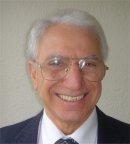Plenary Lecture
Electronic Circuits for Switching-Time Reduction of Bipolar Semiconductor
Devices

Professor Noel Y. A. Shammas
Faculty of Computing, Engineering and Advanced Technology
Staffordshire University
UK
E-mail: N.Y.A.Shammas@staffs.ac.uk
Abstract: Bipolar semiconductor devices
are often used as switches in very high power electronic circuits and
systems. They have replaced the old conventional gas filled tubes and vacuum
devices in many applications. This is mainly due to the fact that
solid-state devices are more efficient, smaller in size, cheaper and more
reliable. In addition, solid-state devices are considered environmental
friendly, since they do not contain nasty gases and toxic materials used in
old devices.
The power level requirements and switching frequency are continually
increasing in the power electronic industry, and this demands larger and
faster switching devices. As a result, both bipolar and unipolar
semiconductor devices have undergone continued improvement in current and
voltage ratings, and switching speed. The main advantage of bipolar devices
is their low conduction losses but their main disadvantage is the high
switching losses which is due to minority carrier injection.
The Insulated Gate Bipolar Transistor (IGBT) combines the advantages of
both. It has a simple gate drive circuit like that of the MOSFET, with high
current and low saturation voltage capability of bipolar transistor. The
main problem remains with the relatively long tail turn-off current. To
reduce the turn-off time of the IGBT and other bipolar devices, different
lifetime control techniques and structural changes have been developed and
used. Details of these and new techniques developed by using auxiliary
electronic circuits for reducing the turn-off time and increasing the
switching speed of bipolar semiconductor devices will be presented.
Brief Biography of the Speaker:
Noel Shammas is currently a Professor in Microelectronics and Solid-State
Power Semiconductor Devices in the faculty of Computing, Engineering and
Advanced Technology, Staffordshire University. He received the M.Sc and Ph.D
degrees from Salford University in 1972 and 1975 respectively. Since then he
lectured and researched at different universities and industry.
Research work is primarily focused on Power Semiconductor Devices which
includes mainly Power diodes, Light Emitting Diodes (LED’s), Insulated Gate
Bipolar Transistors and Thyristors. Other related areas of research work
includes Power Module Packaging technologies ( Both Conventional Press- pack
and Smart pack designs) and Series/Parallel operation of high power
semiconductor devices and their interaction with external circuits.
Professor Shammas has extensive experience in both experimental and
theoretical research work and is recognised internationally for his
significant contribution to research in the field of Power Semiconductor
Devices. He has published over 120 journal and conference research papers as
well as several invited Keynote Lectures, and has held several research
grants from funding councils, Advantage West Midland (AWM), as well as from
industry. He is a regular reviewer for many journals (including IEE
Proceeding Electronic devices and systems, IEEE Transactions on power
electronics, and Microelectronic Reliability) and international conferences
(including the European Power Electronic conference - EPE, Microelectronic
conference - MIEL, Universities Power Engineering Conference-UPEC,
International Symposium Power Semiconductors-ISPS, etc…). He is a member of
scientific committee for many international conferences (including MIEL, EPE,
WCE, WSEAS, and Microtherm) and a steering committee member for EPE, UPEC,
and ISPS international conferences. He is also a book reviewer for Prentice
Hall International and McGraw Hill.